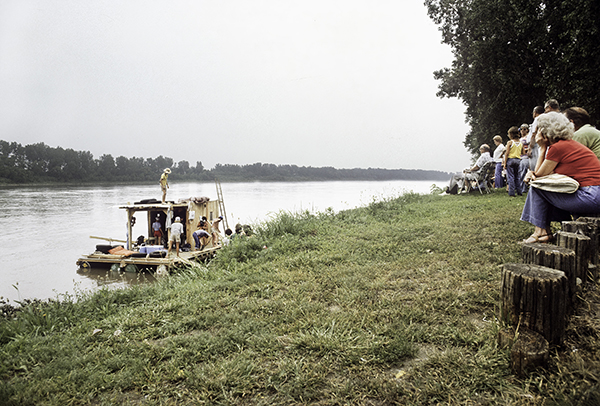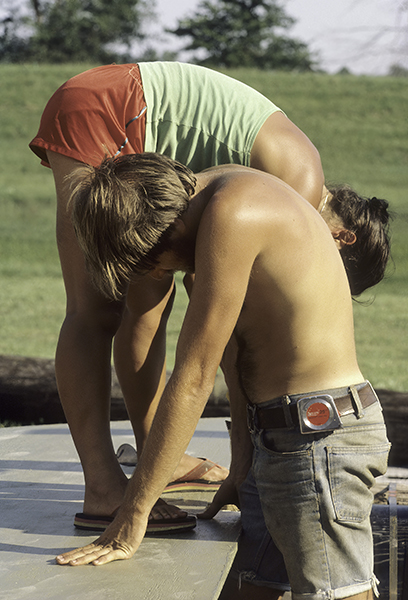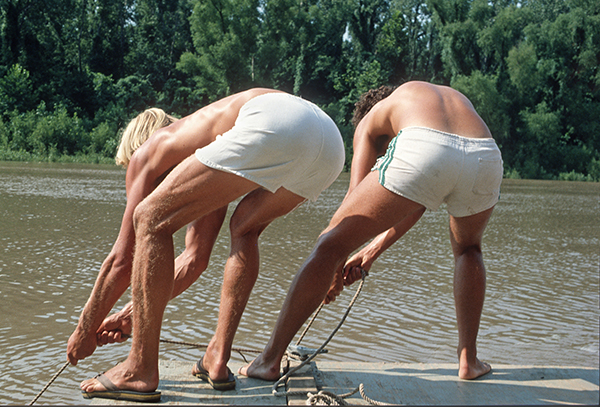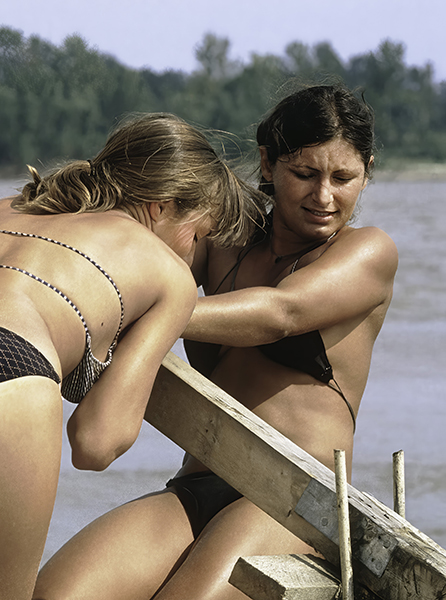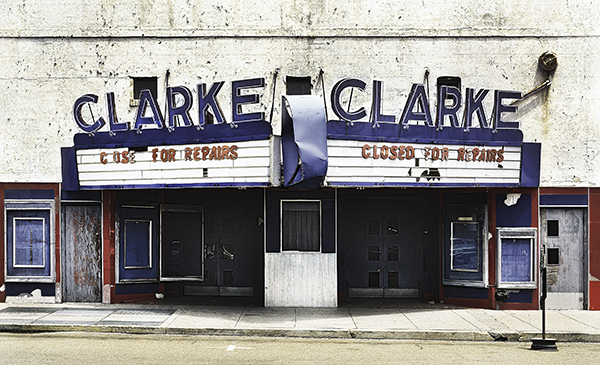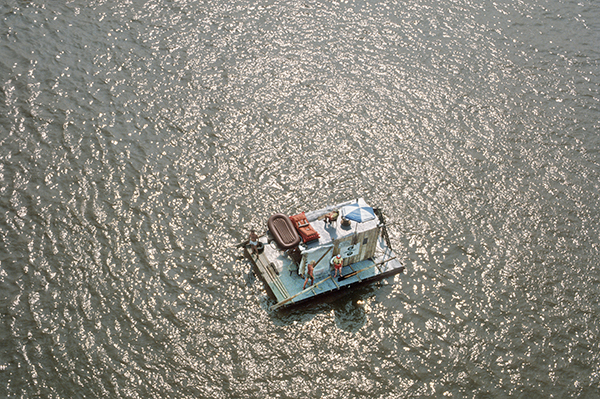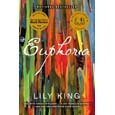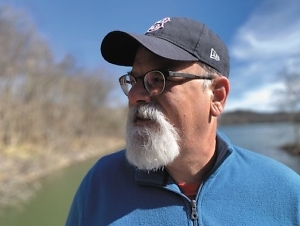Straight on ‘til Morning
The River Will Be a Part of Us chronicles a remarkable youthful adventure
On July 3, 1981, a group of young people from the U.S. and Germany launched a homemade raft on the Missouri River near Kansas City, determined to float to St. Louis and from there all the way down the Mississippi to New Orleans. They named the raft Eulenspiegel after a character in German folklore. Tom Bates, who organized the trip, asked his friend Justus Wayne Thomas, an aspiring photographer, to join the crew and document the two-month journey. Those photographs are collected in The River Will Be a Part of Us, along with reflections from Thomas and other crew members. Atlanta curator and cultural historian TK Smith provides an introductory essay.
 The book’s epigraph from Peter Pan (“Second star to the right and straight on ‘til morning”) suggests the youthful spirit that animated the trip and the practical challenges it entailed, both of which are evident in the pictures. “The feelings of romance conjured by Thomas’s photographs come not simply from their visual beauty but from the content’s context within the visual culture of the United States,” Smith writes. “The images create an immediate sense of nostalgia for something yearned for but rarely experienced — adventure.”
The book’s epigraph from Peter Pan (“Second star to the right and straight on ‘til morning”) suggests the youthful spirit that animated the trip and the practical challenges it entailed, both of which are evident in the pictures. “The feelings of romance conjured by Thomas’s photographs come not simply from their visual beauty but from the content’s context within the visual culture of the United States,” Smith writes. “The images create an immediate sense of nostalgia for something yearned for but rarely experienced — adventure.”
Thomas, a Nashville native who still calls the city home, answered questions from Chapter 16 by email.
Chapter 16: What prompted you to publish these photos after so many years?
Justus Wayne Thomas: Tom Bates and I intended to create a book or magazine article for publication shortly after the raft trip. But the draft Tom was writing while we were still on the raft was lost to the river just outside New Orleans. The crew scattered around the world when the trip was over, and we all returned to our individual lives. Most of us lost track of the others. My Ektachrome slides were stored in a box in the back of a closet, and I went off to law school.
In 2006, I bought a film scanner, which enabled me to convert all my images from the raft trip that I had stored on film into digital files that could be easily shared. Thanks to the internet, the crew members started reconnecting around 2010, and in 2011, we met in Winter Park, Colorado, for a 30th anniversary Eulenspiegel reunion.
A rekindled personal interest in photography, a new perspective gained by the passage of several decades, easy digital access to my images from the raft trip, and renewed connections with my raft mates stirred a fresh determination in me to tell the story of the Eulenspiegel and its crew.
Chapter 16: These are documentary photographs, many of figures in motion, but they’re beautifully composed. How did you approach the task of capturing those moments under such challenging conditions?
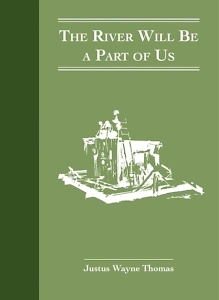 Thomas: I did not have a wide-angle lens, which would have given me some extra flexibility in taking pictures of the raft and its crew while confined to the deck of the raft myself. This limitation forced me to think more carefully about what to include in the frame of each photograph and what to exclude and to find more unusual points of view.
Thomas: I did not have a wide-angle lens, which would have given me some extra flexibility in taking pictures of the raft and its crew while confined to the deck of the raft myself. This limitation forced me to think more carefully about what to include in the frame of each photograph and what to exclude and to find more unusual points of view.
Chapter 16: You were invited on the trip to document it, which must have required you to stand apart to some degree, observing. Do you think that made your experience of the journey different from your crewmates’?
Thomas: When the camera was in my hands, everyone understood what I was doing and why, so I did “stand apart” while taking photographs. But most of the time, my camera was tucked away in its camera bag, and I was just another crew member. I was also not the only crew member with a camera on board. There are several photographs of me taken by other crew members in the book. So, I was both a photographer and a subject during the trip.
Chapter 16: One of my favorite pictures in the book is a wide shot in which the raft is nestled against the bank, looking tiny and fragile compared the expanse of the river. This trip involved some real danger. How frightened were you?
Thomas: Pilots have described flying as “hours of boredom punctuated by moments of sheer terror.” We became reasonably confident in our ability to navigate the river safely, but a few incidents were genuinely frightening.
The first was our arrival in St. Louis at night, just after an electrical storm. A fortuitously draped mooring line prevented us from being crushed underneath a barge berthed in front of the Goldenrod Showboat at the river bank near the Gateway Arch National Monument.
Further downriver, we were sucked into a chute that carried us back into a dark wilderness. Our raft scraped over a waterfall before re-emerging into the Mississippi River.
Chapter 16: The book’s epigraph from Peter Pan seems appropriate — you were all so young! But people of all ages were engaged by what you were doing. Would you do it today if you had the chance?
Thomas: The raft trip was physically taxing, and I’m not sure I could do it now. But I hope the book inspires a few young people to take a similar leap so that in 40 years, they’ll be privileged to answer some “why in the world” questions.

Maria Browning is a fifth-generation Tennessean who grew up in Erin and Nashville. Her work has appeared in Guernica, Los Angeles Review of Books, Literary Hub, and The New York Times. She’s the editor of Chapter 16.
